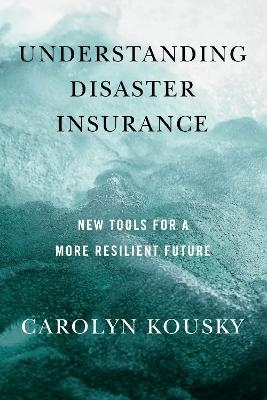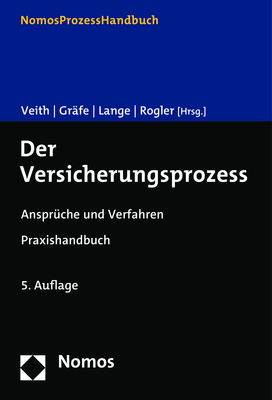
Understanding Disaster Insurance
Island Press (Verlag)
978-1-64283-225-9 (ISBN)
professionals working in resiliency and disaster recovery.
The frequency and intensity of natural disasters—such as wildfires, hurricanes, floods, and storms—is on the rise,
threatening our way of life and our livelihoods. Managing this growing risk will be central to economic and social
progress in the coming decades. Insurance, an often confusing and unpopular tool, will be critical to successfully
emerging from the effects of these crises. Its traditional role is to protect us from unforeseen and unanticipated risk, but as
currently structured, insurance cannot adequately respond to these types of threats. How can we improve insurance to
provide consistent and sufficient help following all disasters? How do we use insurance not just to help us recover, but
also to help us prevent disasters in the first place? And how can insurance help us achieve broader social and
environmental goals?
Understanding Disaster Insurance provides an accessible introduction to the complexities—and exciting possibilities—of
risk transfer markets in the U.S. and around the world. Carolyn Kousky, a leading researcher on disaster risk and
insurance, explains how traditional insurance markets came to be structured and why they fall short in meeting the needs
of a world coping with climate change. She then offers realistic, yet hopeful, examples of new approaches. With examples
ranging from individual entrepreneurs to multi-country collaborations, she shows how innovative thinking and creative
applications of insurance-based mechanisms can improve recovery outcomes for people and their communities. She also
explores the role of insurance in supporting policy goals beyond disaster recovery, such as nature-positive approaches for
larger environmental impact. The book holds up the possibility that new risk transfer markets, brought to scale, could
help create more equitable and sustainable economies.
Insurance and risk transfer markets can be a powerful tool for adapting to climate change, yet they are frequently
misunderstood. Many find insurance confusing or even problematic and ineffective. Understanding Disaster Insurance is a
useful guidebook for policymakers, innovators, students, and other decision makers working to secure a resilient
future—and anyone affected by wind, fire, rain, or flood.
Carolyn Kousky is Executive Director of the Wharton Risk Management and Decision Processes Center at the University of Pennsylvania. Dr. Kousky has written extensively on the economics and policy of natural disasters, disaster insurance market, and climate risk management policies. She is routinely cited in media outlets including NPR, The New York Times, The Washington Post, and others. Dr. Kousky is a University Fellow at Resources for the Future and a non-resident scholar at the Insurance Information Institute. She is vice-chair of the California Climate Insurance Working Group. She has a BS in Earth Systems from Stanford University and a PhD in Public Policy from Harvard University.
Table of Contents
Introduction
PART 1: Disasters, their Economic Consequences, and the Role of Insurance
Chapter 1: The Costs of an Increasingly Risky World
-When Risks Materialize
-Securing Financial Resilience
Chapter 2: What is Insurance and What is it Not?
-The Role of Insurance in the Economy
-What Insurance is Not
-The Disaster Insurance Protection Gap
Chapter 3: How Does Insurance Work and Why are Disasters Difficult?
-How Insurance Works
-The Challenges with Insuring Disasters
Chapter 4: Public Disaster Insurance
-Public Sector Disaster Insurance
-Public Reinsurance and Backstops
-Supportive Programming
Chapter 5: Deciding When to Insure
-Understanding Risks
-Biased Thinking
-The Decision to Insure: Beyond Risk Levels
PART 2: The Structure and Operation of Disaster Risk Transfer Markets
Chapter 6: The Structure of Insurance Markets
-State Regulation
-Policy Distribution
-The chain of risk transfer
Chapter 7: The Cost of Disaster Insurance
-Catastrophe Models
-Premium and Incentives for Risk Reduction
-Insurance Affordability
-Market Cycles and Post-Disaster Dynamics
Chapter 8: The Insurance-Linked Securities Market
-Catastrophe Bonds
-The Use of Cat Bonds by the Public Sector
-Are Cat Bonds Always a Good Idea? The Case of Pandemic Bonds
Chapter 9: Will There be a Climate-Induced Insurability Crisis?
-Stress in markets
-Policy response
PART 3: Innovation to Unlock the Potential of Disaster Insurance
Chapter 10. Improving Disaster Recovery with New Business Models and Products
-Challenges with Recovery
-A New Business Model
-Parametric Models to the Rescue
-Expanding Those with Coverage through Community Policies
Chapter 11: Inclusive Insurance
-Microinsurance
-Meso-Level Insurance
-Sovereign Insurance Pools
-Out of Harm’s Way
Chapter 12: Insurance to Prevent Disasters
-Building Back Better
Chapter 13: Insurance for a Nature Positive World
-Reflecting the Protection of Nature in Insurance
-Insuring Natural Systems
-Nature Positive Risk Transfer Structures, Underwriting, and Investments
Chapter 14: The Future of Risk Transfer: Final Thoughts
| Erscheinungsdatum | 12.09.2022 |
|---|---|
| Verlagsort | Washington |
| Sprache | englisch |
| Maße | 152 x 229 mm |
| Themenwelt | Sozialwissenschaften ► Pädagogik ► Sozialpädagogik |
| Sozialwissenschaften ► Soziologie | |
| Technik ► Architektur | |
| Betriebswirtschaft / Management ► Spezielle Betriebswirtschaftslehre ► Versicherungsbetriebslehre | |
| ISBN-10 | 1-64283-225-1 / 1642832251 |
| ISBN-13 | 978-1-64283-225-9 / 9781642832259 |
| Zustand | Neuware |
| Haben Sie eine Frage zum Produkt? |
aus dem Bereich


